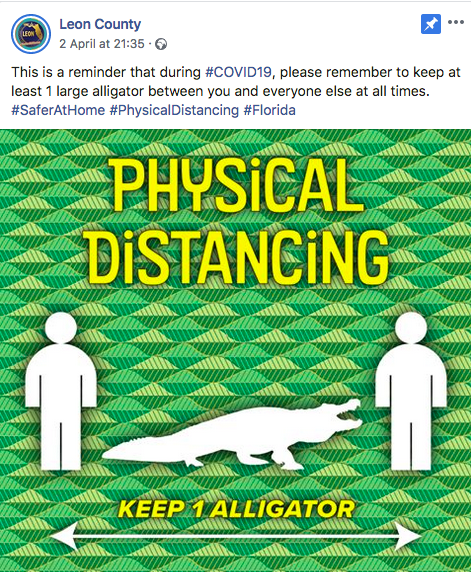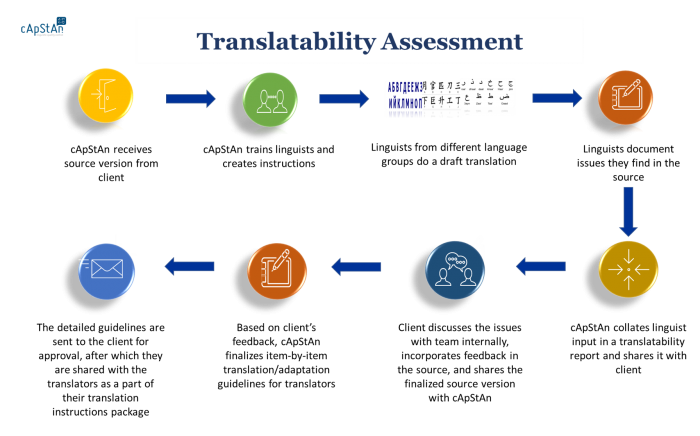
In the current health crisis accurately describing what we are asking of people is crucial: why the term “social distancing” should be changed
by Pisana Ferrari – cApStAn Ambassador to the Global Village
A Florida county is reminding people to maintain a distance of at least one alligator between each other, and a jounalist for CNN suggests imagining the safety distance as the length of two golden retrievers, the width of an average sedan, a sofa, a dining room table, or the length of a mattress. Beyond their humorous side what these examples reveal is that people are finding it difficult to understand the very concept of “social distancing”. This is one of many coronavirus related terms entering common use but which remain unfamiliar to people: there has been a spectacular spike in web searches for these terms on Google Trends in past weeks.
A growing number of people and institutions are in fact calling for the term to be changed. “Social distancing” is about physical separation, and not about social disconnection, says journlist Isaac Chotine, in an article for The NewYorker. Jamil Zaki, associate Professor of Psychology in Stanford’s School of Humanities and Sciences, says that “social distancing” was the wrong term to begin with. We should think of this as “physical distancing”, to emphasize that we can remain socially connected even while being apart, he adds, via what he calls “distant socializing.” “Language matters right now,” says Cormac Russell, faculty member of the Asset-Based Community Development (ABCD) Institute at Northwestern University. It always does, he adds, but in a crisis where social isolation is a serious concern, accurately describing what we are asking of people is crucial. “Stay at home and when out, remain physically apart,” is an essential message, he says, “but to stay well during this time, people will need to actively seek ways to stay social.” In Singapore the Ministry of Health is now talking of “safe-distancing” instead of social distancing, and the US’s CDC, Center for Disease Control and Prevention, offers both options, “social distancing” and “physical distancing”.
How do you translate a concept such as social distancing?
Understanding relevant medical terms is important at all times but all the more so during a global health crisis, where compliance to containment measures is critical to protect individuals and the community at large. At first, governments rarely disseminated information about the coronavirus in languages other than the official one of the country and, as a result, is was not just native speakers who were facing a language barrier, but regional and minority language communities risked getting “lost in translation”.
A number of initiatives are now being taken by national and regional authorities, academics, NGOs and civil society groups worldwide to address this gap and reach as many language groups as possible. Translation is not just about linguistic accuracy: perception shifts due to cultural specificity also always need to be considered. An exercise that is all the more difficult considering that in this particular case many of the new terms, including social distancing, are not clear to begin with.
Disambiguation of the source, a key element of linguistic quality assurance
“Social distancing” is a perfect example of a term that would benefit from a “translatability assessment”. This is a process that we at cApStAn conduct, prior to translation, as part of our Linguistic Quality Assurance work, carried out in the context of international large scale assessments or attitudinal surveys, for example. Time spent optimising the source version “upstream” has shown not only to drive quality of translated texts but also to save time “downstream”, post translation into different languages.
The cApStAn translatability assessment process checks each segment against standardised translatability categories. In the case of “social distancing”, two categories would be relevant. First we would look at the potential ambiguity: it is a term that can be interpreted in more than one way and it also has a somewhat “antisocial” element in it that is confusing. Then we would look at potential cultural issues. i.e. whether the term may be difficult to adapt to particular culture or language groups. Hypothetically, if “social distancing” were a term used in one of the data collection instruments for an international survey or assessment we would recommend changing it to “physical distancing”. Here is a example of the Translatability Process at cApStAn:

The Gilani Gallopedia, a not for profit public service, has recently produced a compilation of 200+ polls on the coronavirus related clinical studies currently ongoing, in 56 countries, across five contintents. Nineteen of these are multlingual studies and it would be interesting to know if the term “social distancing” features in these polls (we expect they would), how it has been translated, and if there were issues. To be followed.
Translation and adaptation of information for specific population groups
People need access to accurate information also in a format that they understand. As the pandemic spreads to nations in which literacy is unevenmy distributed or where there may be more vulnerable groups of people, it may be necessary to find alternative communication channels and to shift the focus from written information to more pictorial, audio, and video content. This is what is being done by Translators without Borders, a non-profit organization set up to provide translation services for humanitarian non-profits.
cApStan’s involvement in the translation/adaptation of surveys and opinion polls
cApStAn has organized, coordinated and supervised the translation/adaptation process in various surveys, polls and market research projects for two decades. cApStAn applies this expertise also in multilingual International Large Scale assessments (ILSAs), psychological tests and talent management instruments. We have made what we believe is a modest but tangible contribution to these fields by continuously shaping, testing and streamlining best practices in test and survey questionnaire localization, and by promoting them at conferences such as the WAPOR, ESRA, ATP, E-ATP, I-ATP and ITC.
Sources (in order of mention)
“A Florida county is reminding people to maintain a distance of at least one alligator between each other”, Alaa Elassar, CNN, April 4, 2020 – https://edition.cnn.com/2020/04/04/us/social-distancing-florida-alligator-trnd/index.html
“Social distancing means standing 6 feet apart. Here’s what that actually looks like”, Kristen Rogers, CNN, March 24, 2020 – https://edition.cnn.com/2020/03/24/health/six-feet-social-distance-explainer-coronavirus-wellness/index.html
“Instead of social distancing, practice “distant socializing”, urges Stanford psychologist”, Melissa Dewitte, Stanford News, March 19, 2020 – https://news.stanford.edu/2020/03/19/try-distant-socializing-instead/
“Social distancing isn’t the right language for what Covid-19 asks of us”, Jenny Anderson, Quartz, April 3, 2020 – https://qz.com/1830347/social-distancing-isnt-the-right-language-for-what-covid-19-asks-of-us/?utm_source=email&utm_medium=daily-brief
“In pictures: Safe distancing in Singapore”, Jeremy Long, CNA, March 29, 2020 – https://www.channelnewsasia.com/news/singapore/in-pictures-safe-distancing-in-singapore-covid-19-coronavirus-12587462
CDC – https://www.cdc.gov/coronavirus/2019-ncov/prevent-getting-sick/social-distancing.html
Gilani’s Gallopedia – http://gilani-gallopedia.org/01/Gallopedia633-01-Item.htm
Translators without Borders response to Covid-19 – https://translatorswithoutborders.org/covid-19
Photo credit: Facebook page of “Leon County”, Florida – https://www.facebook.com/LeonCountyFL/photos/a.638973569455609/3341199722566300/?type=3&theater